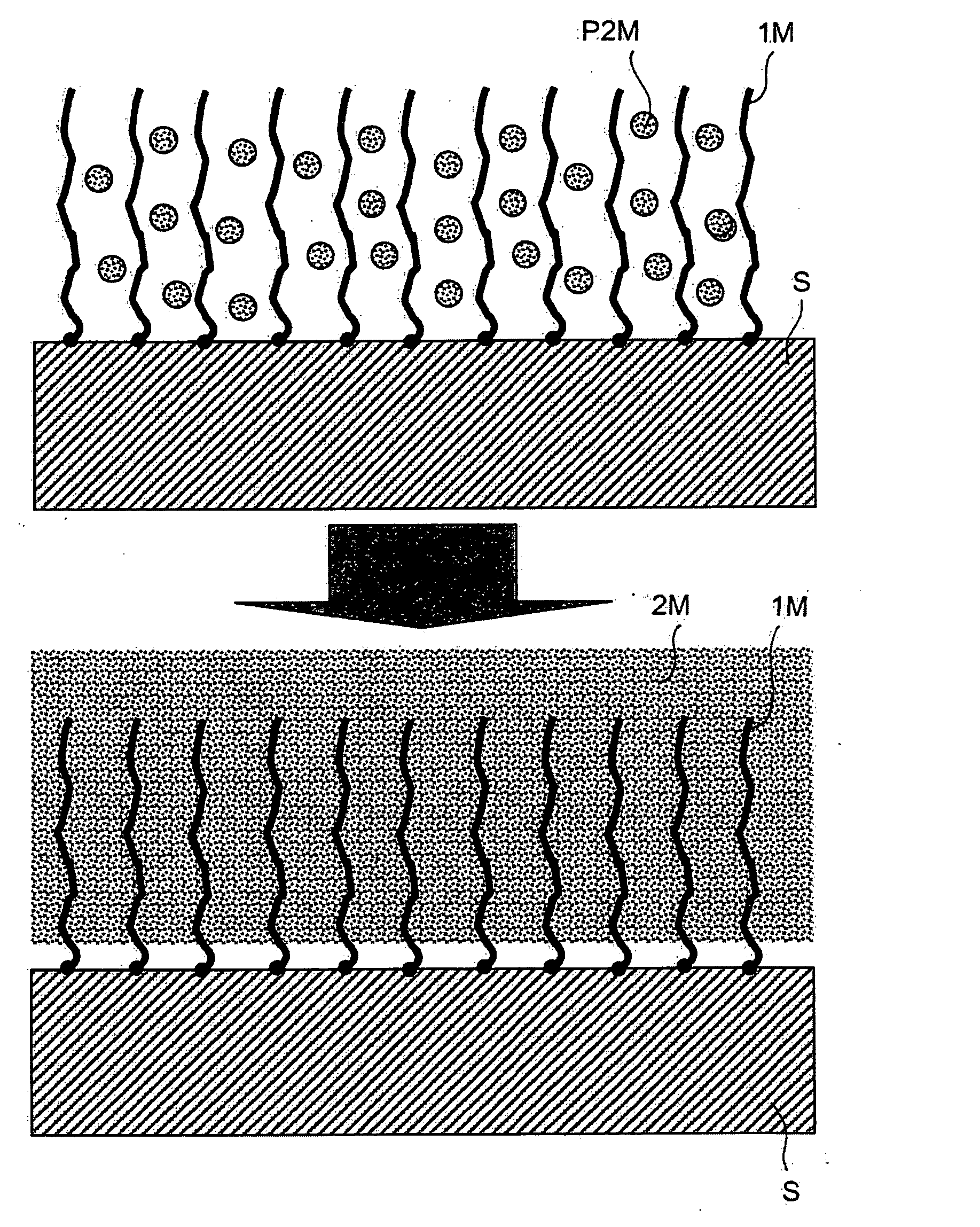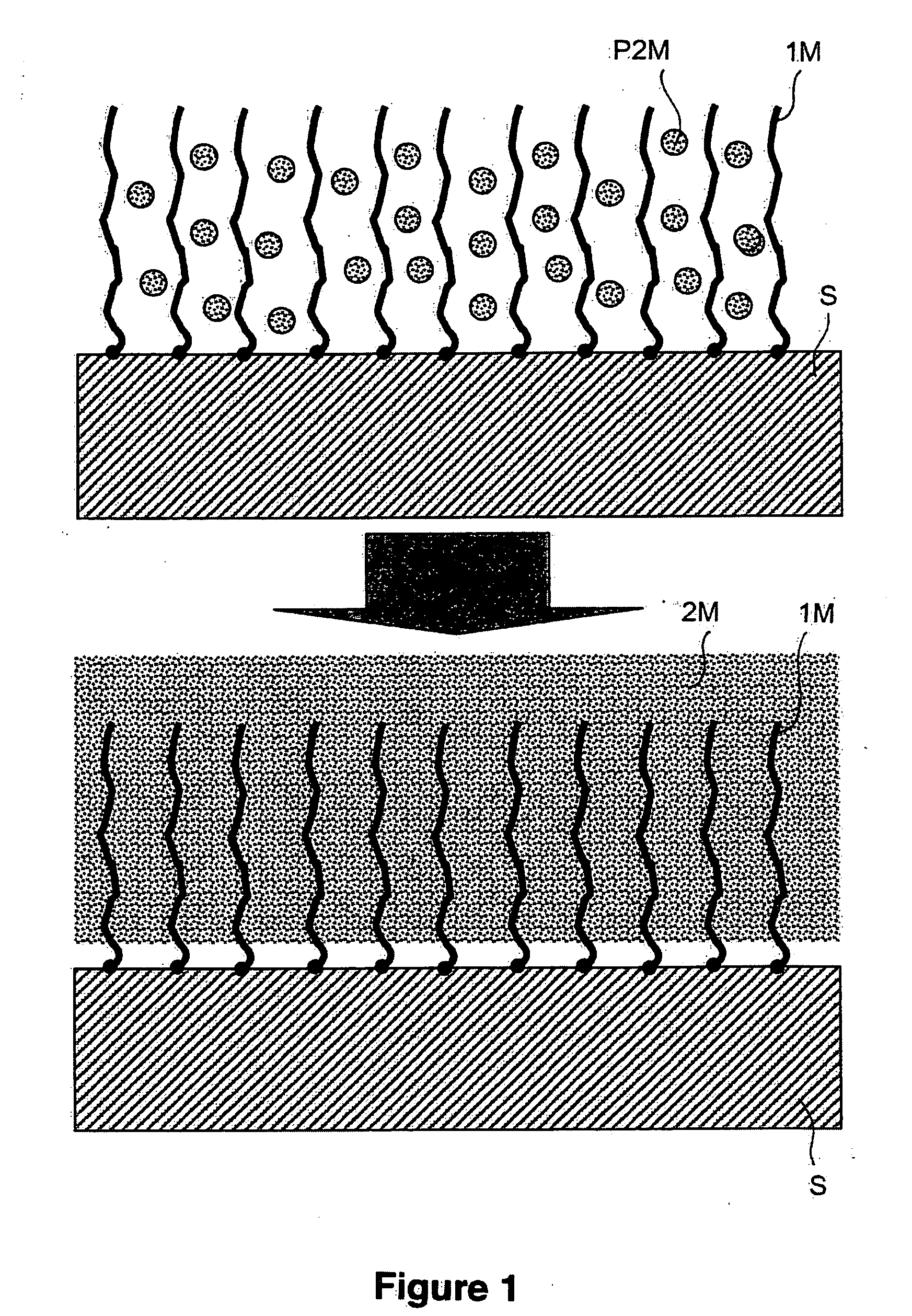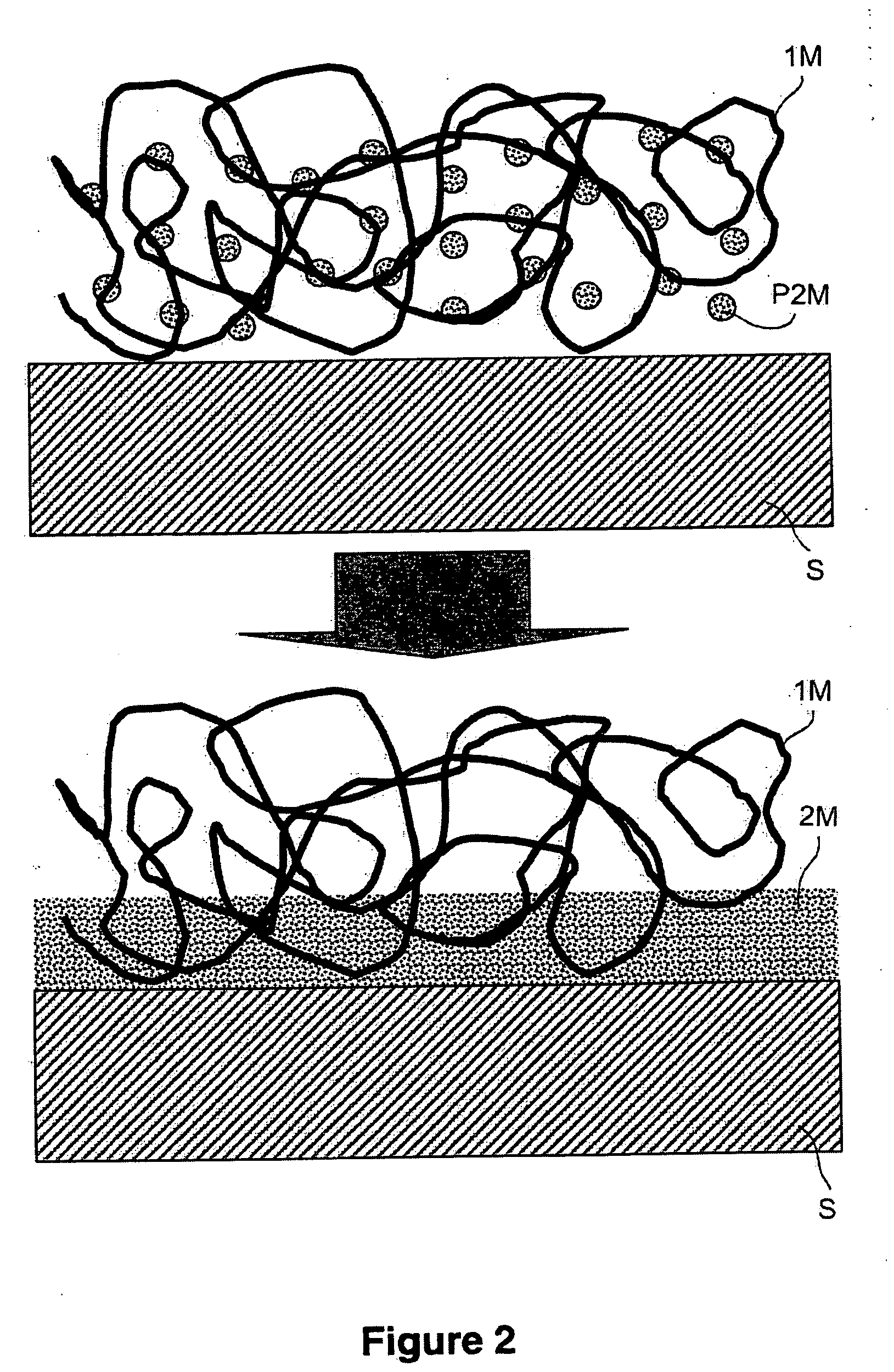Surface-coating method
- Summary
- Abstract
- Description
- Claims
- Application Information
AI Technical Summary
Benefits of technology
Problems solved by technology
Method used
Image
Examples
example 1
Attachment of Copper to a Gold Surface by Armouring Using an Electrografted P4VP Film
[0227] This example illustrates the very adhesive attachment of copper to a gold surface, using armouring consisting of an electrografted poly(4-vinylpyridine) (P4VP) film. FIG. 1 is a schematic representation of this example in accordance with the present invention.
[0228] An electrografted P4VP film 30 nm thick is first prepared on a 316L stainless-steel leaf subjecting the surface, dipped into a solution containing 40% by volume of 4-vinylpyridine in DMF, in the presence of 5×10−2 mol / l of TEAP, to 50 voltammetric sweeps from −0.7 to −2.9 V / (Ag+ / Ag) at 200 mV / s.
[0229] The leaf thus treated is rinsed with DMF, dried under a stream of argon and then dipped for 25 minutes in a solution of 10 g of copper sulphate [CuSO4.5H2O] in 200 ml of deionized water. The leaf is then rapidly rinsed with a few jets of deionized water, and then dipped into DMF. It is then subjected to cathodic polarization at a ...
example 2
Attachment of Copper to a Gold Surface by Armouring Using an Electrografted P4VP Film (II)
[0235] The experiment of Example 1 is repeated, but using a different electrodeposition solution, which is conventional in spent-bath electroplating and also in barrel electroplating, providing a glossy deposit of copper of better quality. This example illustrates the compatibility of the armouring with electroplating processes, and thus makes it possible to benefit from reinforcement of the copper / gold interface while at the same time satisfactorily depositing the material of interest, consisting of the copper, according to the same process as usual.
[0236] To do this, the gold leaf covered with an electrografted P4VP film is dipped into an aqueous solution containing 50 ml of distilled water, 11 g of CuSO4.5H2O, 3 g of H2SO4 (d=1.83) and 6 mg of NaCl, for 30 minutes, and then electrolyzed in the solution for 15 seconds at the equilibrium potential, and then for 3 minutes at −0.5 V / (Ag+ / Ag) (...
example 3
Attachment of Nickel to a Gold Surface by Armouring by Means of an Electrografted P4VP Film
[0238] The same experiment as in Example 2 is performed, but using a reinforcing solution of nickel(II) ions, precursors of a deposit of metallic nickel, containing 50 ml of deionized water, 12.5 g of nickel sulphate, 3.25 g of nickel chloride and 2 g of boric acid.
[0239] A gold leaf covered with an electrografted P4VP film 30 nm thick is dipped into the solution thus prepared for 30 minutes, and then electrolyzed in the above solution for 15 seconds at the equilibrium potential, and then for 3 minutes at a cathode current density of between 2 and 4 A / dm2, with magnetic stirring.
[0240] A nickel deposit that shows good adhesion to the surface is obtained, since it withstands rinsing by ultrasound in DMF for 2 minutes, whereas the same deposit is impaired under the same rinsing conditions without prior armouring.
PUM
| Property | Measurement | Unit |
|---|---|---|
| Time | aaaaa | aaaaa |
| Electrical conductor | aaaaa | aaaaa |
| Semiconductor properties | aaaaa | aaaaa |
Abstract
Description
Claims
Application Information
 Login to View More
Login to View More - R&D
- Intellectual Property
- Life Sciences
- Materials
- Tech Scout
- Unparalleled Data Quality
- Higher Quality Content
- 60% Fewer Hallucinations
Browse by: Latest US Patents, China's latest patents, Technical Efficacy Thesaurus, Application Domain, Technology Topic, Popular Technical Reports.
© 2025 PatSnap. All rights reserved.Legal|Privacy policy|Modern Slavery Act Transparency Statement|Sitemap|About US| Contact US: help@patsnap.com



